A beautiful orange, green, and blue patterned bird residing on an island where it is the only member of its species!
Meet the Trinidad Motmot
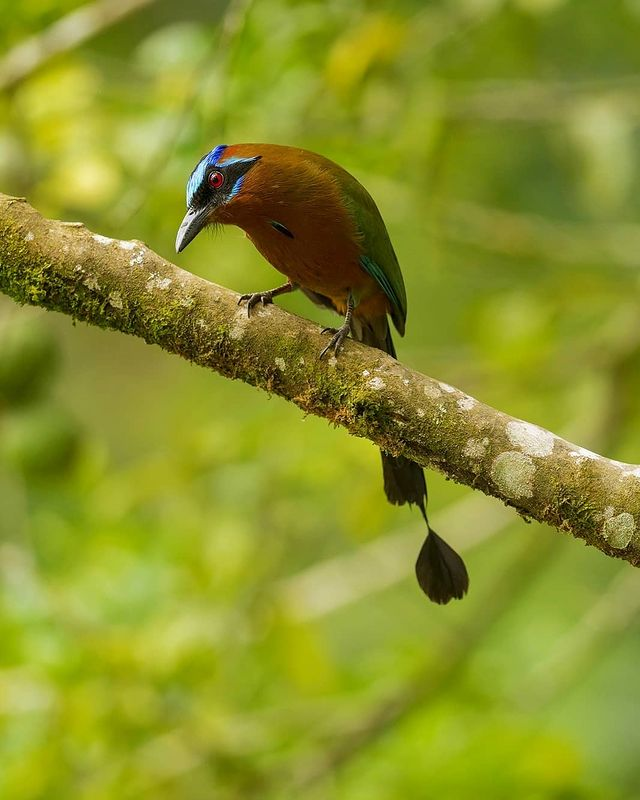
The Trinidad motmot (Momotus bahamensis) is a beautiful bird with a stunning head pattern, black bill, and a long racquet-like tail. Their back and wings are green, while the uppertail is primarily green at its base and blue towards the tip. The central pair of rectrices is much longer than the other tail feathers and has racquet-like tips. Underparts are rufous-brown with isolated blue and black feathers around the upper breast. The crown is black, bordered by a broad azure-blue stripe extending from the bill to the rear crown, forming an incomplete diadem. There is a narrow, blue malar stripe below the black mask which tapers to a point on the side of the head. The nape is a washed buff. The eyes are deep red. Their legs and feet are grey.
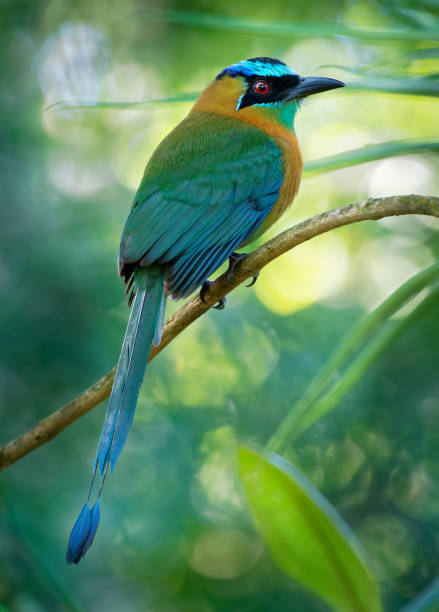
Males and females look very similar to one another.
Juvenile birds do resemble adult birds but lack the blue and black upper breast feathers of adult birds. Their mask is mostly sooty-black and lacks the adult’s long racquet-like tail.
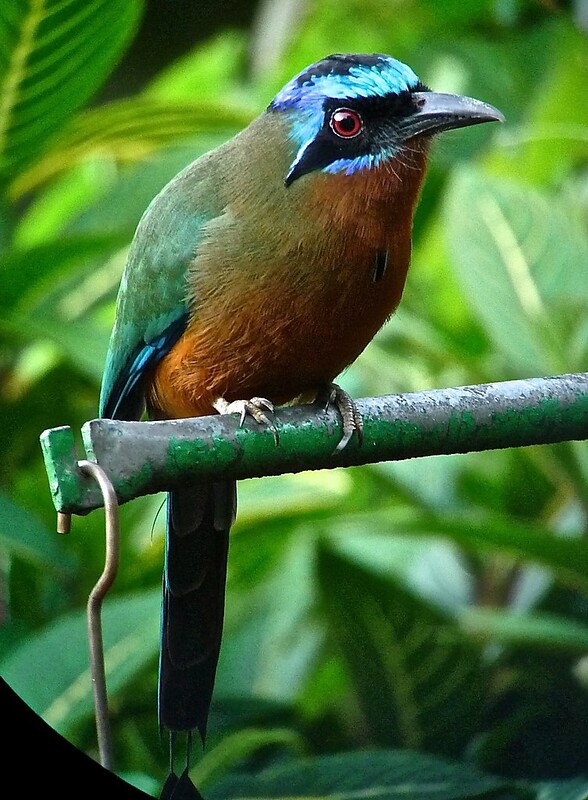
Photo Courtesy of PEHart / CC BY-SA 2.0
The Trinidad Motmot is confined to and endemic to the islands of Trinidad and Tobago.
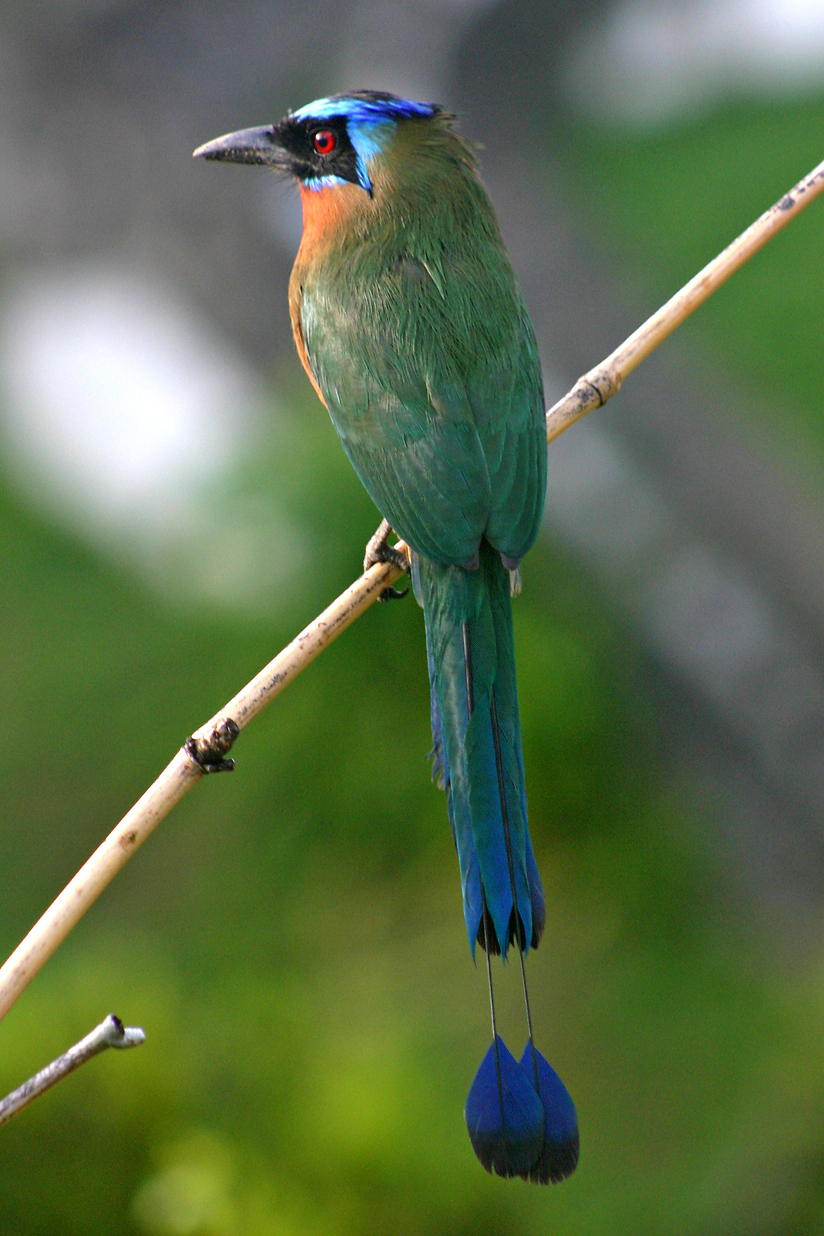
The Trinidad Motmot is found in the interior of the lowland evergreen forest on Trinidad. In Tobago, it is mainly found in cacao plantations, sandy beaches, and open habitats including pastures with large trees, being more prevalent in Tobago than in Trinidad.
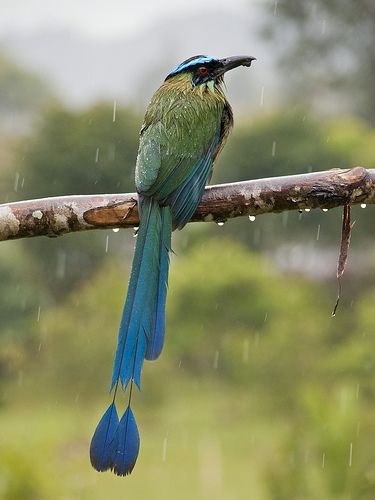
The Trinidad Motmot likes to dine on invertebrates found in the leaf litter on the ground. It follows the swarms of army ants or small birds which help it to locate spiders, insects, and other various invertebrates. It may occasionally catch small reptiles and young birds, but it will also take mollusks and earthworms.
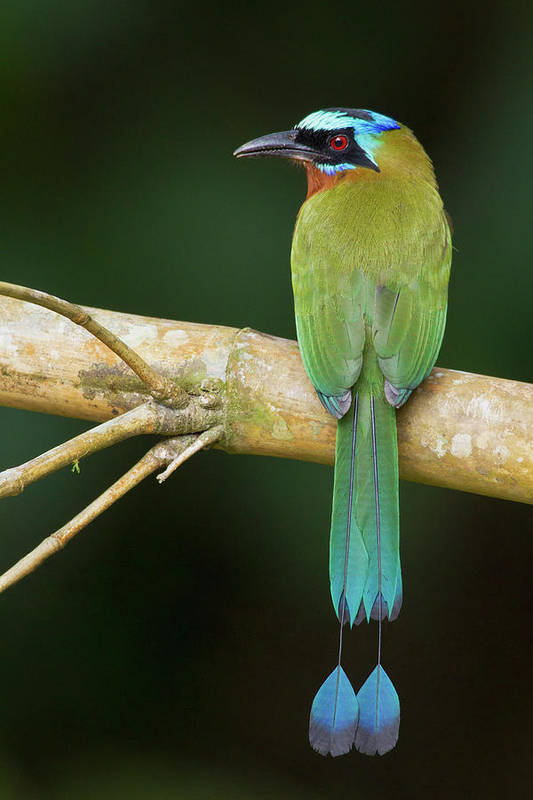
In Tobago, it feeds mainly on fruits in wet and dry seasons, and it takes dung beetles and cicadas during the rainy season.
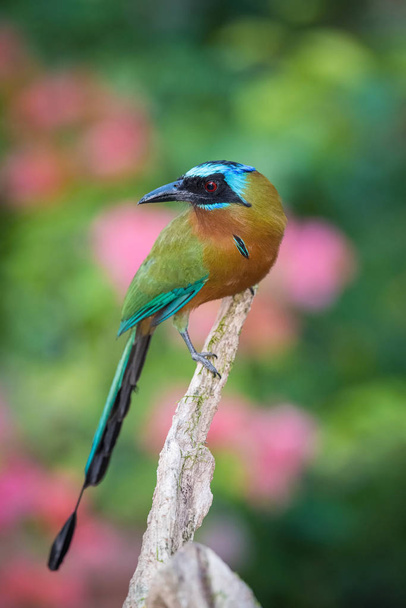
During the breeding season, April to May in Trinidad, and March to July in Tobago, the Trinidad Tobago builds a nest in a burrow built into an earth bank by both sexes, the length varies from three to five meters. The entrance is usually well hidden behind a tree trunk or roots, with a new burrow being built each year which explains to some extent why the couple remains together all year. Three white eggs are laid within the burrow which is incubated by both sexes. The young fledge around four weeks after hatching. The young are able to forage on their own once they leave the burrow.
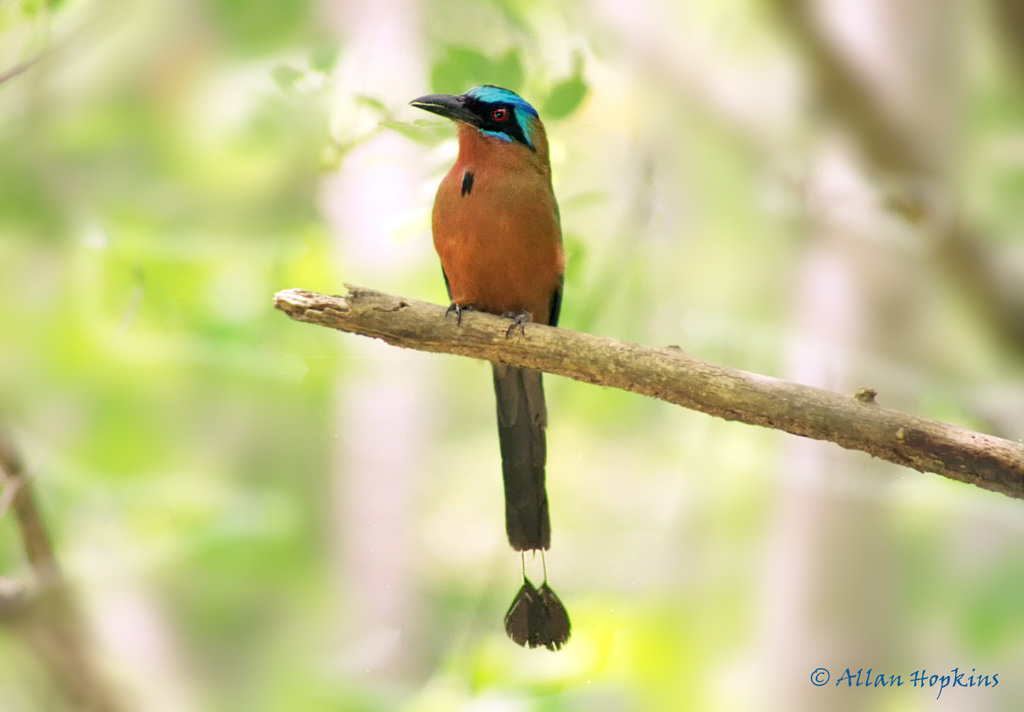
The species is much more common in Tobago where it is a tourist attraction. In Trinidad, it is considered shy and uncommon. The population size is unknown, but it is suspected to be stable.
You can watch this bird right here in the video below:




